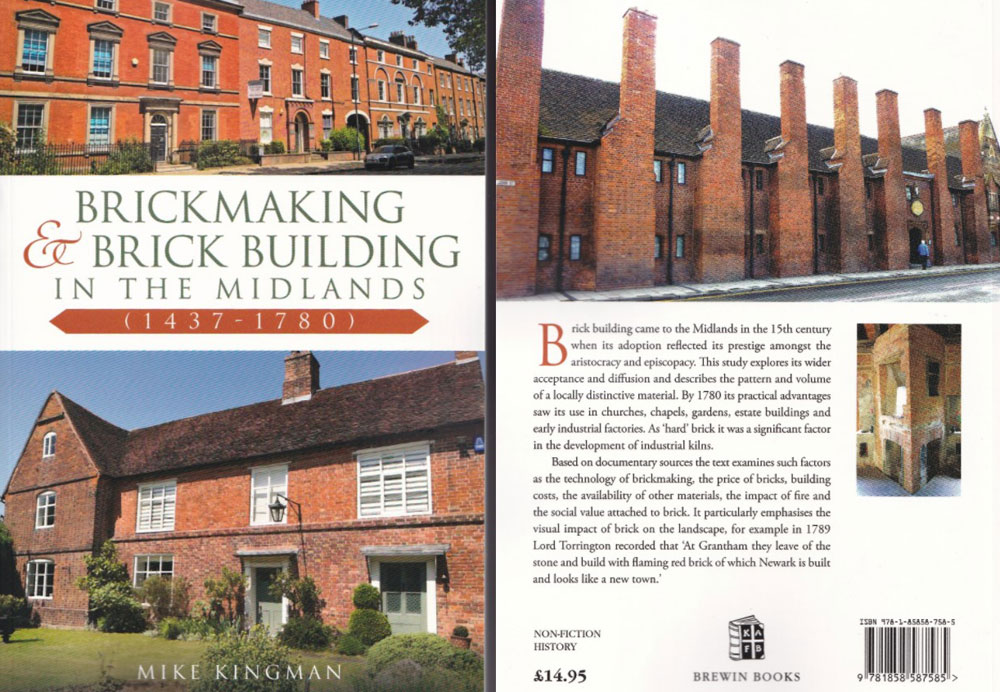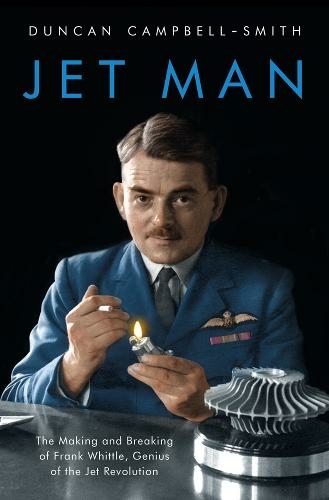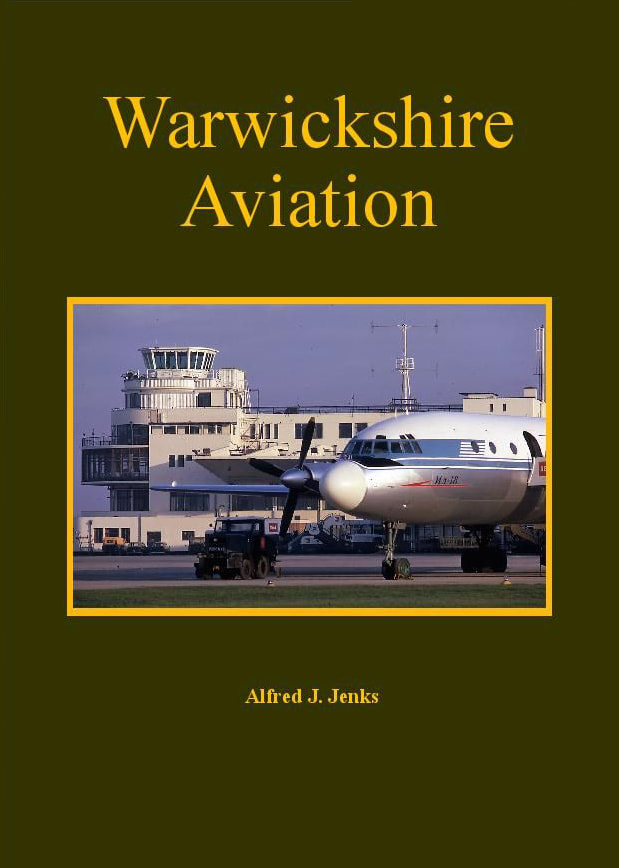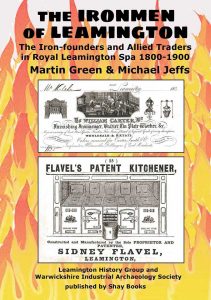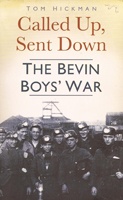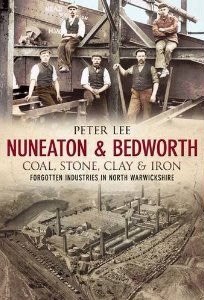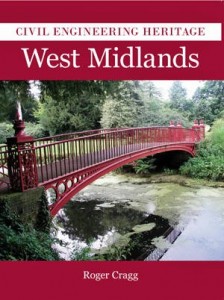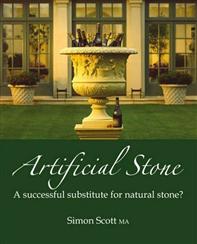BOOKS
A few recommended reads!
Brick Making & Brick Building in the Midlands.
This is an academic study which explores the question Why did People Build in Brick? It discusses the pragmatic answers of availability, price, building costs and transport but also emphasises the social value attached to brick and its impact on the visual landscape. It contains evidence of brick technology, the fuels employed and the range of bricks produced (over 40 are listed). It discusses evidence from Warwickshire, eg output of the Strelley kilns at Sherbourne and the relationship between brickmaking and coal mining.
ISBN -1-85858-758-5 Copies available from booksellers or the author, Dr Mike Kingman.

The Pioneering Life of Peter Kirk–From Derbyshire to the Pacific Northwest.
Pages: 318
eBook ISBN:9781098370923
Paperback ISBN:9781098370916
I have recently published a biography about Peter Kirk, a 19th century industrialist who manufactured rails and sold them around the world. He incorporated at least 15 of his own inventions into his products and the machines that produced them to fuel his success.
His knowledge base came from his Derbyshire family who had been in the wrought iron business since at least 1770.
Even though this story encompasses Peter Kirk’s life, including immigration to an American frontier to build a large-scale steel mill in 1886, there are many anecdotes of interest to industrial archaeologists. Some of these include: the Industrial Revolution additions his ancestors put to work to advance the forge, his family’s work philosophy, an incident after the 1842 Mines Act passed, how he and his brothers tackled the chemistry problems of the different ores and other resources needed, descriptions of his inventions, and how rails were made.
My book is titled The Pioneering Life of Peter Kirk–From Derbyshire to the Pacific Northwest. You can read the first ten pages at Book Baby Bookshop: https://store.bookbaby.com/book/the-pioneering-life-of-peter-kirk. It is offered on Amazon, Waterstones, Baker & Taylor, and Bookshop.org.
Saundra Middleton
Jet Man: The Making and Breaking of Frank Whittle, Genius of the Jet Revolution
by Duncan Campbell-Smith
Published by Head Zeus, 2020
534pp, ISBN (HB) 9781788544696
£30
This new biography is a long overdue and very detailed “warts and all” account of the struggle of Sir Frank Whittle to bring his invention of the gas turbine turbojet engine to fruition. In many ways it makes for uncomfortable and disturbing reading. It must be stated from the outset that those particularly interested in Warwickshire history will be disappointed to find in this work no new material relating to Whittle’s early life in Coventry and Leamington Spa. However, Duncan Campbell Smith’s book does forensically relate the technical, financial and political difficulties that Whittle and Power Jets Ltd had to overcome to make the WU gas turbine and its successors work, initially at BT-H Rugby and subsequently at Lutterworth.
Unfortunately for Whittle, there were certain individuals in relatively high positions in the Air Ministry and other governmental departments who did not share his enthusiasm and confidence in jet propulsion. These differences of opinion are graphically set out in this book. With the highly successful first flight of the Gloster-Whittle E28/39 at Cranwell in May 1941, it should have been obvious to all those involved that the turbojet was a potential war winner. Not one senior official from the Ministry of Aircraft Production was present to witness the event, including George Bulman head of the engine directorate! Procrastination and obfuscation ruled at the Air Ministry and Ministry of Aircraft Production, and it was not until July1944 that the Gloster Meteor was accepted into RAF service. All this is faithfully recounted.
Whittle’s poor health over an extended period, largely due to overwork, is also explicitly documented. This culminated in him being invalided from RAF service in 1948. It is pleasing to read that Sir Frank succeeded in obtaining happiness in later life in the USA where, after several visits, he went to live permanently. His genius seems to have been far more widely accepted there than in Britain, thus reaffirming the biblical text that a prophet is never acknowledged in his own country!
There are errors in this book; almost inevitable in a tome of this size and complexity. Fortunately, they are of a relatively minor nature and do not detract from the general excellence of the narrative. One minor irritation is the author’s persistent use throughout the book of the word “plane” to describe an aeroplane or aircraft. In this reviewers opinion a plane is a carpenter’s tool for fashioning timber! The word “plane” is widely used in the popular media to define an aeroplane, but in a work of this stature it is slightly jarring! One very useful feature is a list of the principal individuals mentioned throughout the text, giving a potted history of each and their particular relationship to Whittle.
This work is not a glossy superficial history of Whittle and the invention of the jet engine, but a serious and thought provoking account, using information gleaned from many sources. This reviewer commends the book to all those who are interested in the origins of the gas turbine turbojet engine and its place in aviation history.
Reviewed by John Willock
February 2021
Warwickshire Aviation
by Alfred J. Jenks
ISBN 978-1-5272-7216-3
534 pages. 297mm x 207mm. Hardback
£25 + £7 p&p UK (weighs over 2kg.)
It can be collected from: 62,Glascote Close, Shirley, Solihull, West Midlands. B902TA
alfredjenks1944@gmail.com
Tel: 0121 7452104
Warwickshire Aviation
A hardcover A4 book printed in black and white published in 2020. It has 534 pages depicting hundreds of photographs many of which have not been seen before. It comprises of six chapters the first covering military and civil airfields besides all the sites used by the flying circuses during the 1930s. Private strips are also mentioned provided they held an air display open to the public. The main aero clubs, together with gliding clubs, take up another two chapters. Twelve aircraft manufacturers are mentioned together with a list of all the aircraft they built together with records of all the surviving machines where known. The “Around & About” section comprises 100 pages of 1st & 2nd World War accidents along with ballooning and other related aviation items not taking place on airfields. The final section includes personalities, home builds, museums, 14EFTS, 605 Sqdn, ATC units and scrap yards.
The author has had access to the minute books of Midland Aero Club 1909-33 & 1946-66, the Coventry Aviation Group 1934-37 and the Coventry Aeroplane Club 1932-40, 46-77 along with police accident reports from 1941-3. He has also been able to scan several pilot logbooks together with photo albums from the 1930s onward.
If you need any more info just email. You can collect a copy of the book if you wish, depending on where you live. Please phone before to make sure I’m in. Cash or cheque is fine. Alfred J. Jenks
Book Review
Warwickshire Aviation
by Alfred J. Jenks
ISBN 978-1-5272-7216-3
534 pages. 297mm x 207mm. Hardback.
This magnificent reference work is the product of obviously much research by the author into all aspects of aviation in Warwickshire, from its earliest days right up to 2019. It comprehensively encompasses not only the locations associated with aviation in the county, but also the aircraft and personalities involved. Its alphabetical format permits easy reference to every airport, airfield and landing strip identified as falling within the county.
Additionally, comprehensive histories are also included for all the aircraft manufacturing centres and the aeroplanes constructed. Many of the early car companies, particularly in Birmingham and Coventry, became aircraft manufacturers necessitated by the demands of the First World War. This process was to be repeated within less than twenty years when there was an even greater requirement for aeroplanes of all descriptions.
Mr Jenks does not neglect the history of civil aviation and includes many references to private flying and the associated flying clubs formed within the county. There are very detailed entries of aircraft registered to these clubs and the names of pilots who also obtained their licences through the auspices of their respective clubs.
In a fairly large section of the book entitled “Around and About” (Chapter 5), the author details incidents and accidents that occurred within the county from as early as 1784 to the cut-off point of 2019. This is a truly remarkable piece of research, spanning two hundred and thirty-five years, and will be of tremendous value to serious aviation historians and enthusiasts.
The book is copiously illustrated with black and white illustrations throughout and here it is felt that some consideration perhaps could have been given to the introduction of colour to lighten a rather sombre format. However, this feature would undoubtedly have introduced additional production difficulties and probably increased the unit cost of the publication. The reviewer does have one further slight niggle with the illustration on the front cover. This depicts an Aeroflot Ilyushin Il-18 turboprop airliner at Elmdon on 23rd December 1967. It is felt that an illustration of a locally built aeroplane may have been more apposite for a book dedicated to Warwickshire Aviation!
By any standards this is a tremendous book, not only for its content but the amount of work that has gone into its production, and this reviewer has no hesitation in recommending it to fellow aviation historians and enthusiasts. It will undoubtedly be the standard reference work on the subject for many years to come.
Reviewed by John Willock
January 2021
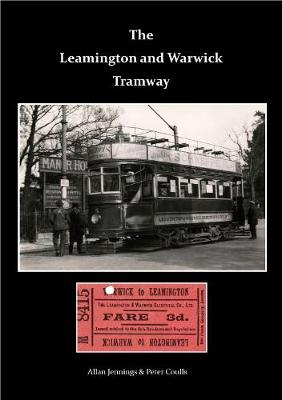
Peter Coulls and Alan Jennings: ‘The Warwick and Leamington Tramways’
Allan and Peter have written a comprehensive history of ‘The Leamington and Warwick Tramway’ which last ran in 1930. It includes details of the horse drawn and electric trams that travelled between the two towns for 49 years. Again, it includes many images along the route. This book will appeal to local historians, transport historians, industrial archaeologists, people with an interest in the history of the two towns and others who will just enjoy checking out the old postcards and photographs. This book will be ideal for a birthday or Christmas present.
Available to purchase at the WIAS October meeting! The retail price of each book is £15.95, but can be obtained from the authors for £10.95. For more information contact; Allan Jennings: allan.jennings1@ntlworld.com or Tom Lewin: lewthomas48@gmail.com or Peter Coulls petercoulls@btinternet.com
Martin Green and Mick Jeffs: The Ironmen of Leamington
Leamington History Group and Warwickshire Industrial Archaeology Society are pleased to announce the forthcoming publication of their joint research project, THE IRONMEN OF LEAMINGTON: The Iron-founders and Allied Traders of Leamington Spa 1800-1900 by Martin Green and Mick Jeffs. This liberally-illustrated book provides a fascinating insight into the world of iron-founding in the rapidly expanding town of Leamington Spa during the 19th. century, exploring the experience of the firms and individuals involved.
To buy your copy now follow this link to The Ironmen of Leamington page!
Book on Sanderson Miller
Following the recent talk on the landscape of Farnborough, when he discussed his findings on the old mediaeval buildings and the amazing C18 water landscape, I am offering my book Sanderson Millet and his landscapes for sale to members. Miller created the landscape at Farnborough for, and together with the owner, William Holbech, who had recently returned from a prolonged tour of classical Italy. It was an extensive project involving the creation of three large lakes, and a remodelling of the whole hillside to form a terrace from the Hall towards the village of Mollington. Classical garden buildings along the terrace overlooked the valley towards Edgehill and Millers own house at Radway. The book is hardback, illustrated with many colour and black and white photographs, drawings and maps. Originally priced at £30 when published in 2006, it can now be obtained from Warwick bookshop for £12, or directly from myself at £14 inc p and p.
Dr. Jennifer Meir, Jacksons Barn, Charlecote, Warwick, CV35 9EW.
From Pens to Particle Physics
The story of Birmingham Family Business
by WIAS Member John Berkeley OBE
Brandauer celebrated its 150th anniversary in 2012. A long-established, family-run, precision engineering business in Birmingham, the firm has made the transition from manufacturing pens in the nineteenth century to making vital components in the twenty-first century for the Large Hadron Collider at CERN, the European Organisation for Nuclear Research.
Two men, Joseph Petit, a Jewellery Quarter craftsman of French Huguenot origin, and the German Karl Brandauer, a merchant, formed the Brandauer partnership in 1862. Since then, the business has been in the forefront of communications technology. By 1890 it had won several prizes at international exhibitions for its pens, the company catalogue listed 424 individual designs and its products were exported around the world. The advent of the ballpoint pen and information technology effectively ended the Birmingham pen trade, but Brandauer diversified, producing many products in the second half of the twentieth century, including stylus arms for record players, hubs and shutters for floppy disks, integrated circuit frames and components for telecommunications industries.
John Berkeley has written a fascinating, informative and well-illustrated account, which interweaves company history, technical innovation and the experiences of the owners and workers. If one message emerges, it is that adapting its products to rapidly changing markets has ensured Brandauer’s success.
NOW AVAILABLE TO DOWNLOAD FREE IN PDF FORMAT – CLICK HERE FOR A FULL COLOUR COPY
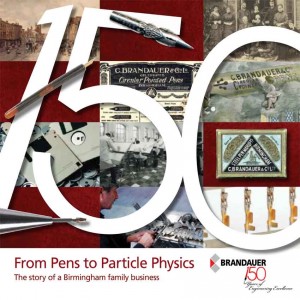
The Companion to Road Passenger Transport History
Contributing authors include Richard Storey of WIAS
Spans almost two centuries of the development of British road passenger transport, from horses and the first mechanically powered trams and buses to hybrids and hydrogen buses; and from stage coaches to motorway express services. Through a range of articles it explores every aspect of the industry’s history, and will be an essential reference work for anyone with an interest in road passenger transport. It is the second encyclopaedic work of reference prepared by the Roads and Road Transport History Association and follows the Companion to British Road Haulage History, published in 2003.
Called Up, Sent Down – The Bevin Boys’ War
by Tom Hickman.
At the outbreak of WWII the government short-sightedly allowed thousands of miners to enlist in the armed services. By 1943 the effort was in danger of grinding to a halt because of a lack of coal. In answer Ernest Bevin sought service volunteers – and compulsorily sent 20,000 18 year olds, who had expected to fight for their country, down the mines with them. Those chosen had their names allegedly taken from Bevin’s hat, every 1 in 10 drawn out went into the mines in what was a very unlucky dip! It’s hard to believe in this day and age that back in 1939 the UK had 773,000 miners! and when that number dipped below 700,000 something had to be done. A fascinating story of the experiences and memories from men from all walks of life – from labourers to barristers.
Nuneaton & Bedworth Coal, Clay, Stone & Iron
by Peter Lee
The Warwickshire twin towns of Nuneaton and Bedworth have merged to become a single unitary borough. But fifty years ago, they were two separate communities, each with their own character, culture and rich industrial heritage. For centuries they have shared a common resource – the mineral wealth that lay below the ground. Coal, stone, clay and iron were long ago found in abundance in a great sweep from the outskirts of Coventry through North Warwickshire to the Staffordshire border. This would bring great change and propserity to a working-class area. Today, most of this business is gone. Where there was once full employment, now almost 50 per cent of the local working population are employed outside the borough. The times have changed. But here, preserved for posterity, is a wealth of information about the labour-intensive industries that shaped the landscape. The area’s collieries, brickyards, quarries and factories are listed and described, while their connections via road, rail and canal are also explored. (Highly recommended – Webmaster!)
Civil Engineering Heritage, (West Midlands),
by Roger Cragg of WIAS
This book is part of a regional series on civil engineering heritage that examines the contribution the civil engineer has made to society over the last three hundred years. It is fully illustrated throughout, making an important contribution to the industrial history of Britain, and would interest anyone with a desire to know more about civil engineering in the UK. It includes a county-by-county gazetteer of groundbreaking monuments to civil engineering, from aqueducts to windmills. Roger has been the West Midlands Region member of the ICE’s Panel for Historical Engineering for the past 33 years, and is closely involved with the indentification and recording of the civil engineering heritage of the region. He is also a member of the Warwickshire Industrial Archaeology Society, the Newcomen Society, the Association for Industrial Archaeology, the Railway and Canal Historical Society and gives numerous talks to local organisations on many aspects of civil engineering history.
Artificial Stone
by Simon Scott MA
Artificial stone has a long and illustrious history that intertwines with the great boom in classically inspired country house building from the eighteenth century onwards. There have been more imitations of stone than of any other natural building material. This persistent emulation has most consistently been for reasons of economy, availability and fashion – particularly where quarried stone is difficult, time-consuming and forbiddingly expensive to employ. This volume provides a history of the most important manufacturers of artificial stone from the eighteenth century to the present day, mainly from the perspective of garden or landscape ornamentation.
120 pages, 20 photographs, hardback with dust wrapper.
Publication date: November 2009
£15 inc P&P (UK only)
email publishing@haddonstone.co.uk
Send your suggestion to WIAS through the ‘Contact’ page!

